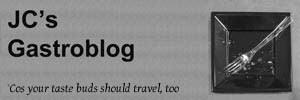This really should be made with a cockerel cooked for about three hours. However, cockerels being notably absent from most supermarkets, this more readily available version uses the ubiquitous chicken. Do try to buy a good one; it really is worth it. Guinea Fowl makes a well flavoured alternative serving 2 or 3 rather than 4 being a little smaller. In consequence, reduce the cooking time by 10 minutes or so.
Planning
| serves: |
4 |
| preparation time: |
15 mins |
| cooking time: |
75 mins |
Ingredients
- 16 small onions, peeled
- 8 oz. smoked bacon in the piece
- 2 oz. butter
- 1 chicken or guinea fowl
- 3 tbs. brandy
- bouquet garni (4 parsley sprigs and 1 bay leaf)
- 1/2 tsp. dried thyme
- 2 cloves garlic, chopped
- 16 fl. oz. red wine (Burgundy style – pinot noir)
- 1/2 oz. flour
- 6 tbs. stock (made from the chicken carcass)
- 2 tbs chopped parsley
- 8 oz. mushrooms
- 1 1/2 tbs. shallots, chopped
- salt and pepper
Method
Clean the chicken and cut it up into eight pieces (thighs, drumsticks, wings with some breast and the remaining breast portions). Make stock out of the remaing carcass and giblets.
Prepare the bacon and button onions. Choose a pan that you can put in the oven. Preheat the oven to gas mark 4. Cut the bacon into lardons (about 1 1/2 ins. by 1/4 in. square). Fry these in 1/2 oz. butter until the fat runs and they are brown and getting crisp. Remove the lardons from the pan, keeping the fat, and drain them on kitchen paper. Brown the onions in the reserved fat over moderate heat shaking occasionally, then bake them in the oven for about 15 mins. until barely tender. Remove them from the fat and set them aside.
While the onions are baking, brown the chicken pieces in butter. Pour off most of the fat and flame the chicken in the brandy. Put the chicken in a heavy enamelled pan with the lardons, bouquet garni, thyme and garlic.
Reduce the wine to about 10 fl. oz. Stir the flour into the fat remaining in the frying pan scraping in any browned pieces. Blend in the reduced wine gradually and add the chicken stock. Bring to the boil, simmer for a few minutes to thicken it and strain it over the chicken in the casserole. Bring this back to a simmer, cover with the lid and cook it in the centre of the oven.
Meanwhile prepare the mushrooms. Cook the chopped shallots in 1 oz. butter for about 30 secs to soften them. Add the mushrooms (whole if small, quartered if large) and cook for 2 – 3 mins. Add them to the reserved onions.
After cooking the chicken for about 30 mins., add the onions and mushrooms and cook for a further 15 mins. or until tender.
I like to serve this with steamed green beans and loads of mashed potato to soak up the sauce.
Get a pdf version of this recipe
